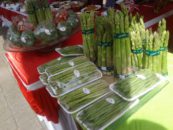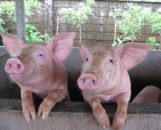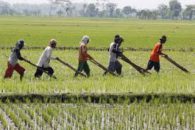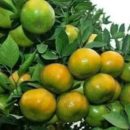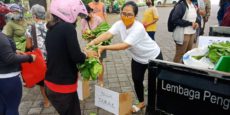Dr. Panudiana Kuhn, a well-known writer, businessman, and exporter, recently shared his editorial view regarding the future direction of the Balinese economy and the need for the Island to rediscover its agricultural roots. What follows is a free translation of Dr. Kuhn’s comments as published originally in Indonesian in Balipost.com.
+ + +
The Balinese economy needs to return to the basics familiar in the 1970s and 1980s.

First, the Island’s agricultural sector must be redeveloped. Beginning now, trade high schools (SMK), high schools (SMP), and grade schools (SD) must teach students good farming practices. For example, students must learn to plant cabbages, garlic, shallots, onions, and vegetables to become the basis for the preparation of organic and non-organic salads.
Second, plantation or larger-scale agriculture must be taught. Bali needs trade schools on how to raise good crops. Bali has coffee plantations, grape vineyards, and vanilla and cocoa crops. There are many different kinds of crops being grown.
Third, young Balinese need to learn how to protect and cultivate the Island’s forested and jungle areas. Jungles areas still exist in West Bali, North Bali, East Bali, and Central Bali.
How can Bali sustain its forested and jungle areas? To do this, young people need to study and understand the Island’s jungles. How can these areas be preserved to create a “green Bali”? Jungled areas have the potential to become tourist attractions. Similarly, agricultural plantations can also become interesting places for visits by foreign tourists.
Other sectors worthy of development are its surrounding oceans and fisheries. The abundance of fish in the open ocean is almost limitless, says Kuhn. Bali must invest in large fishing vessels.
Fortunately, Kuhn says enterprises owned by regional governments are investing in the maritime sector. This is necessary in order to have ships that can sail in seas with waves of 3-5 meters in height and capable of sailing to distant areas in Ambon, East Nusa Tenggara, Papua, the Java Straits, and the Lombok Straits. Adding: We can catch unlimited amounts of fish in those areas. There are many kinds of fish in the oceans.
Kuhn warns that all these things come with a price. We can cultivate and farm tilapia fish (Mujair), lobsters, Clarias catfish (Ikan Lele), prawn, spawn, ornamental fish, and other aquatic life on seaside areas. Many restaurants in Bali continue to import fish from Java. Lobsters can now be fish farmed and cultivated.
Animal husbandry and farming can also be taught to the youth of Bali. Bali already raises livestocks of pigs, chickens, goats, sheep, and others. Rare Kintamani dog breeds exclusive to Bali can be raised to meet strong demand for this breed.
The industrial production of animal feed is lacking in Bali. While other neighboring nations produce feed materials for cattle, pigs, prawns, fish meal, ducks, and alike, these sectors still do not exist in Bali. This is required with some agriculturalists on the Island going bankrupt in the past due to the high cost of feedstocks. Should the Provincially-owned company be established to provide such feedstocks?
Finally, Panudiana Kuhn called for attention to be paid to increasing exports from Bali. Bali is now exporting aquatic spawn and fingerlings to Cambodia, Vietnam, and the Philippines. The Island also currently exports a wide range of items, including handicrafts, garments, coffee, vanilla, ready-to-wear clothing, ceramics, seaweed, mangosteens, and salaks fruits that can be expanded in the future. Kuhn called for Indonesian youth to be trained in sewing, textile (endek) weaving, and woodworking.
The Balinese businessman believes that many areas of employment could be developed in Bali. He said the students were now trained in schools that teach tourism, hospitality, and culinary arts. He said Bali also needs trade schools that teach agriculture, farming, forestry, and animal husbandry – among others.


